|
The Art of Paper Marbling |
||
|
|
||
| What is paper marbling? | ||
| Marbling is the art of printing multi-colored swirled or stone-like patterns on paper or fabric. The patterns are formed by first floating the colors on the surface of a liquid, and then laying the paper or fabric onto the colors to absorb them. (It is not at all the same art as faux marble, or faux finishes, which involves painting a marble-like finish directly onto walls, columns, or furniture.) Marbling is sometimes still called by its original Turkish name, ebrū. Marbling is a lot more popular now than it has ever been before in its 1000-year history. |
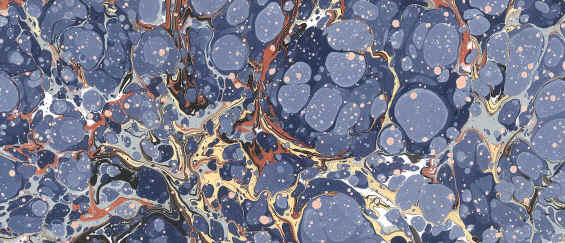 |
|
|
Check 'em out! Below is a link to examples of different kinds marbled paper patterns that can be created: |
||
| 28 Examples | ||
|
A Short Description of the Marbling Process |
||
|
1. Alum is dissolved in water. This is sponged onto each paper to be marbled, and the paper is allowed to dry. The alum is what will bond the color to the paper. 2. A thick liquid, referred to as the size, is made by blending a type of gelatin (carrageenan) with water. 3. The size is poured into a shallow tray. 4. Several colors of ink or paint are sprinkled onto the surface of the size. They float on the surface because they are lighter than the thickened water. 5. A stick is used to stir the floating colors if desired. Various combs and rakes may also be run through the colors to make more intricate patterns. 6. A sheet of the alum-treated paper is gently laid onto the surface of the size, and it absorbs the floating colors. Only one print can be made. 7. The paper is lifted off, rinsed, and hung up to dry. Fabric marbling is done the same way, except for step #1: Instead of sponging the alum onto the cloth, it is soaked in the alum water, then hung up to dry, then ironed flat. After that, it can be marbled just like a sheet of paper. |
||
|
How to create a piece of marbleized paper step-by-step! |
||
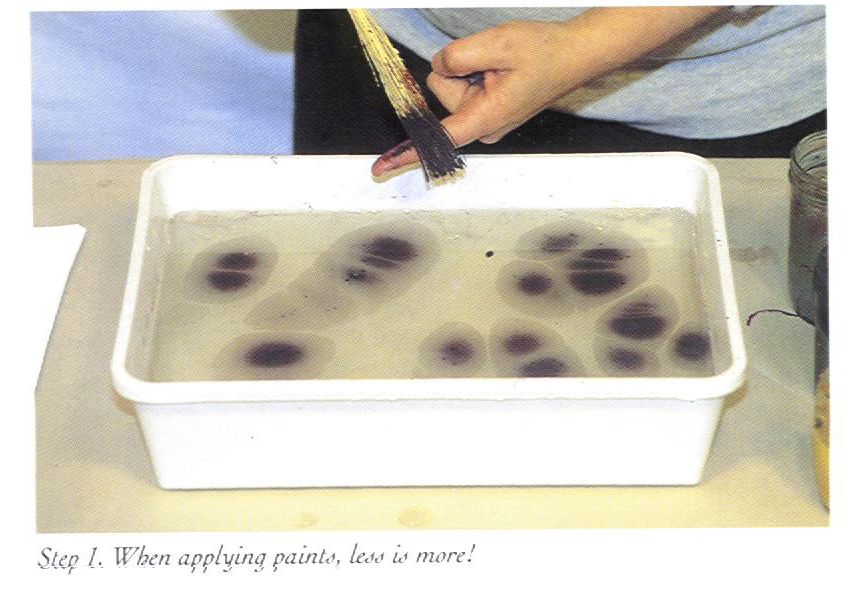 |
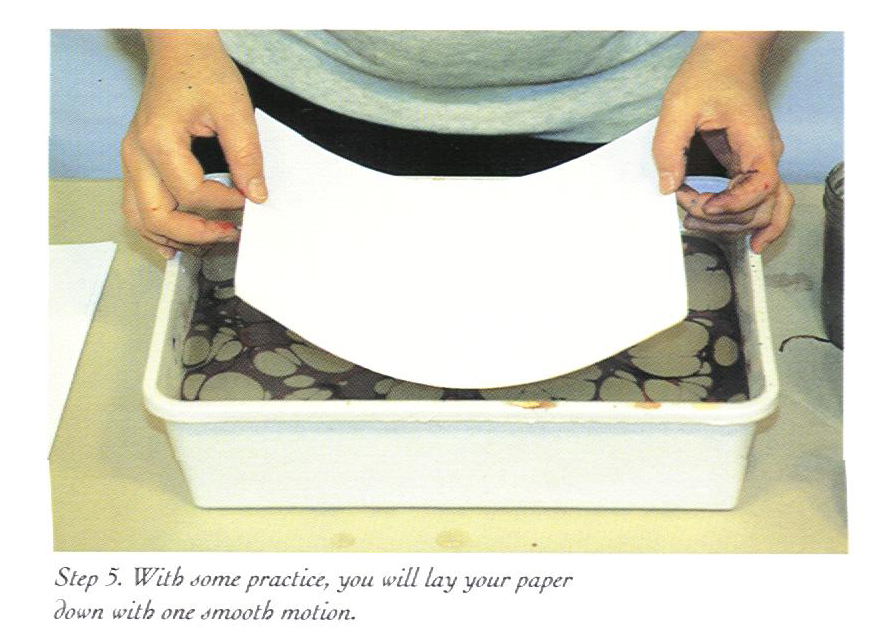 |
|
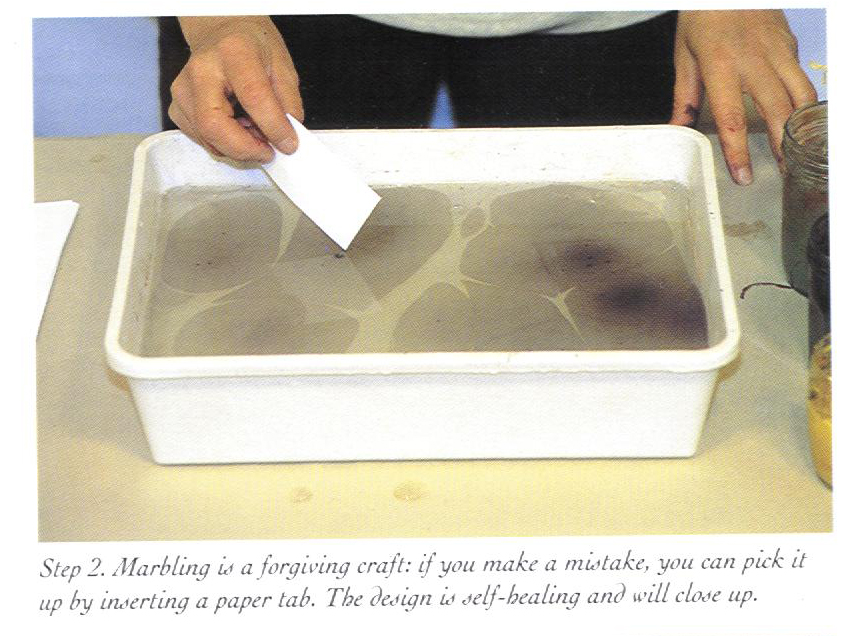 |
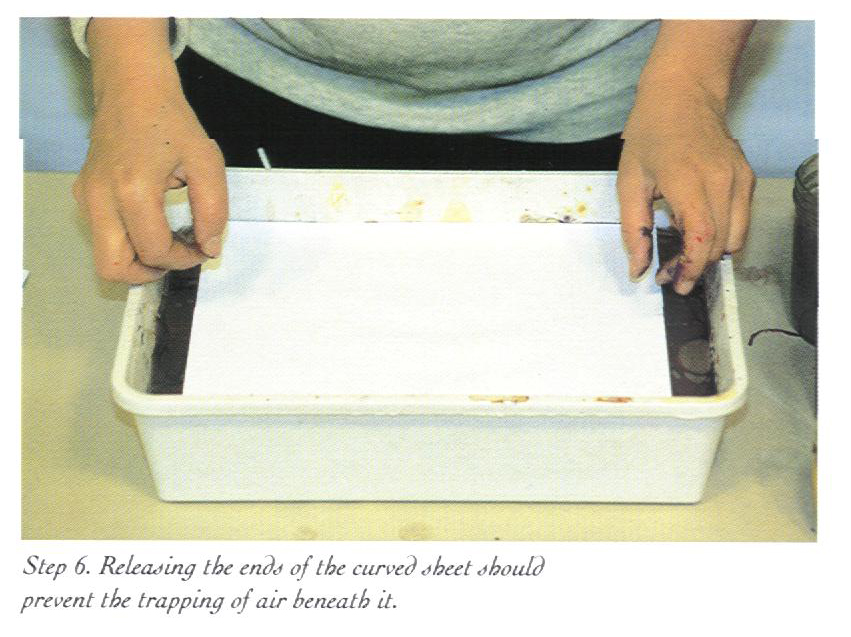 |
|
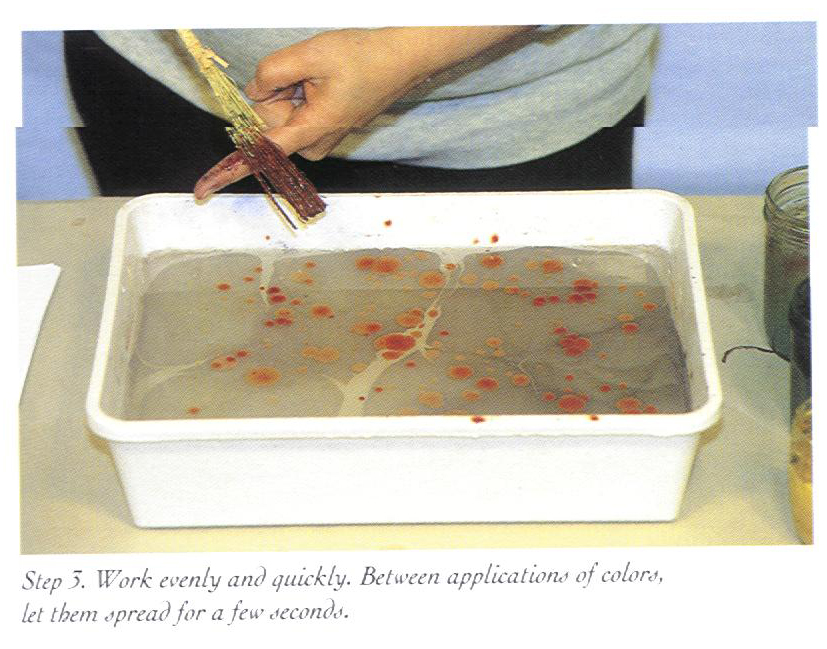 |
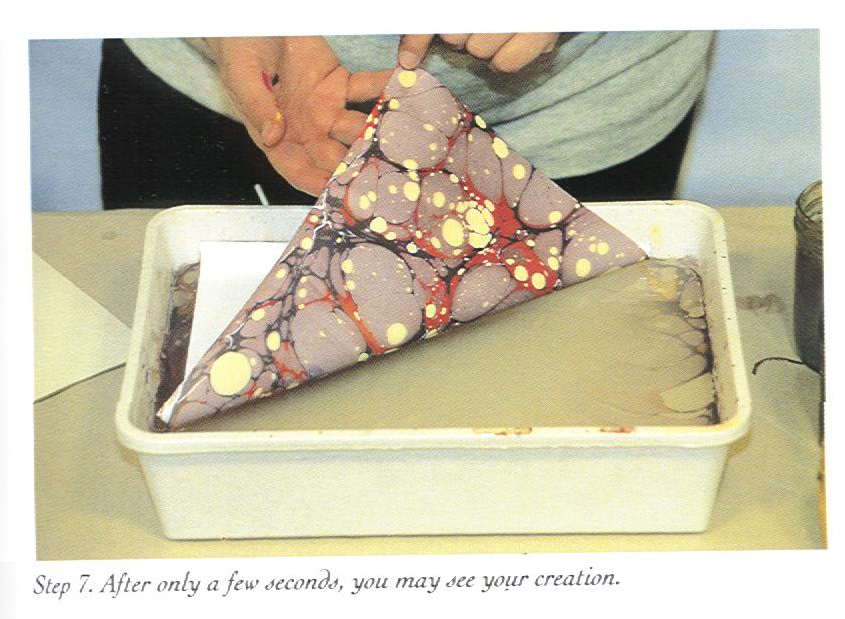 |
|
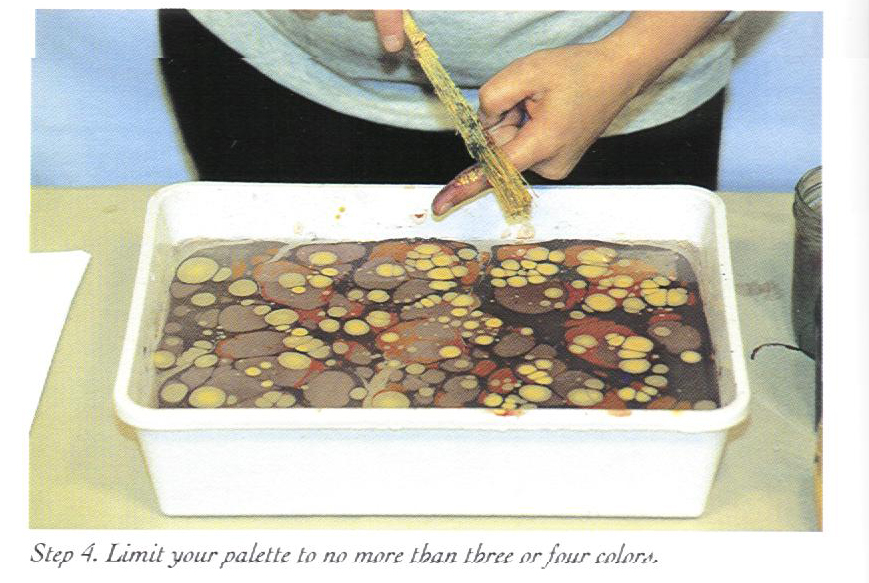 |
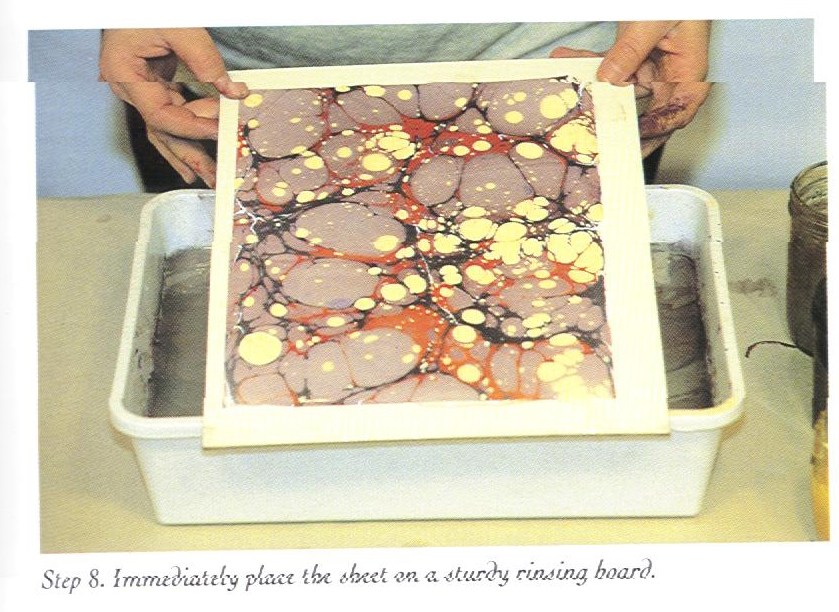 |
|
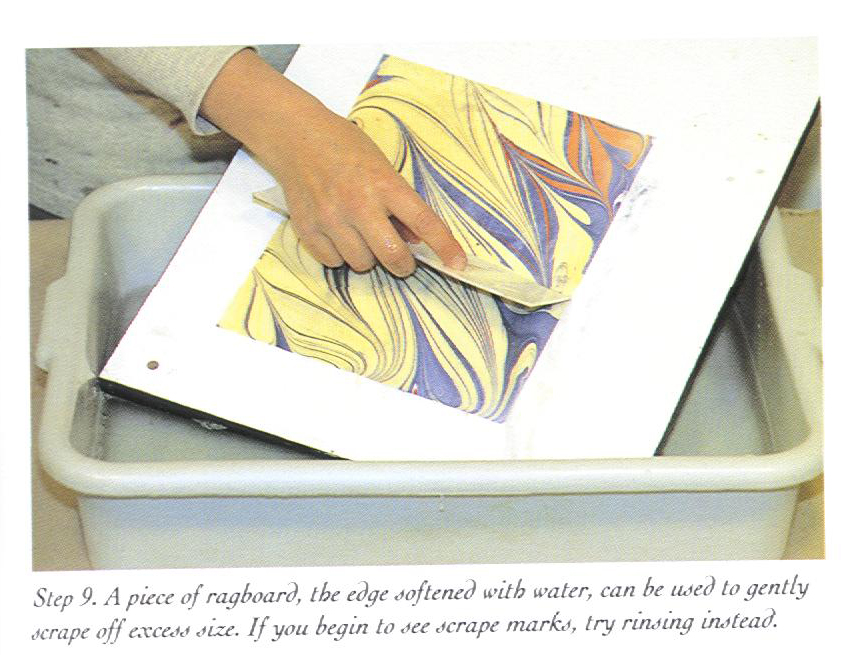 |
||
|
|
||
 |
||